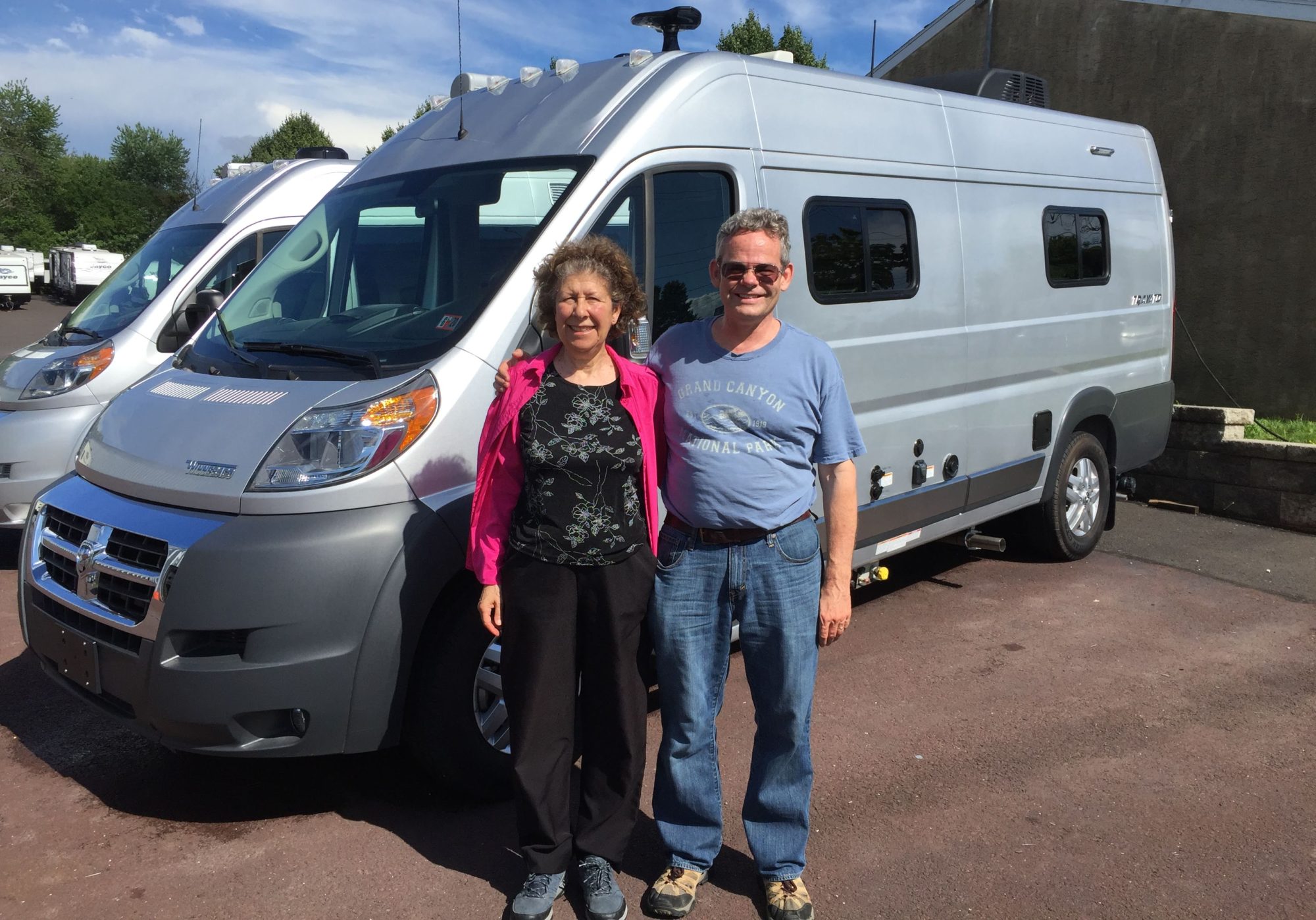We spent a nice day kayaking on the Salt Forks Lake. It was very, very hot. Our spirits were dampened by the news that a young child had drowned on the lake the previous evening, when he fell from his parents’ boat without a life jacket. Very sad.
We decided to start off again on Tuesday. We learned from experience that we need a reservation for the long weekend. We decided to stay the weekend in St. Louis, which is about a 7 hour drive from Salt Forks. With 3 driving days to get there, we felt there was still time to meander around and visit some towns along Route 40.
Route 40 was one of the first coast-to-coast American highways. It has been more or less replaced by I70. In this part of the country, the two roads are parallel. I70 is the fast and boring route. Rte 40 meanders through many towns where it often runs through the town center. It follows an even older road called Zane’s Trace, which ran through eastern Ohio in the late 1700’s and was constructed by Ebenezer Zane.
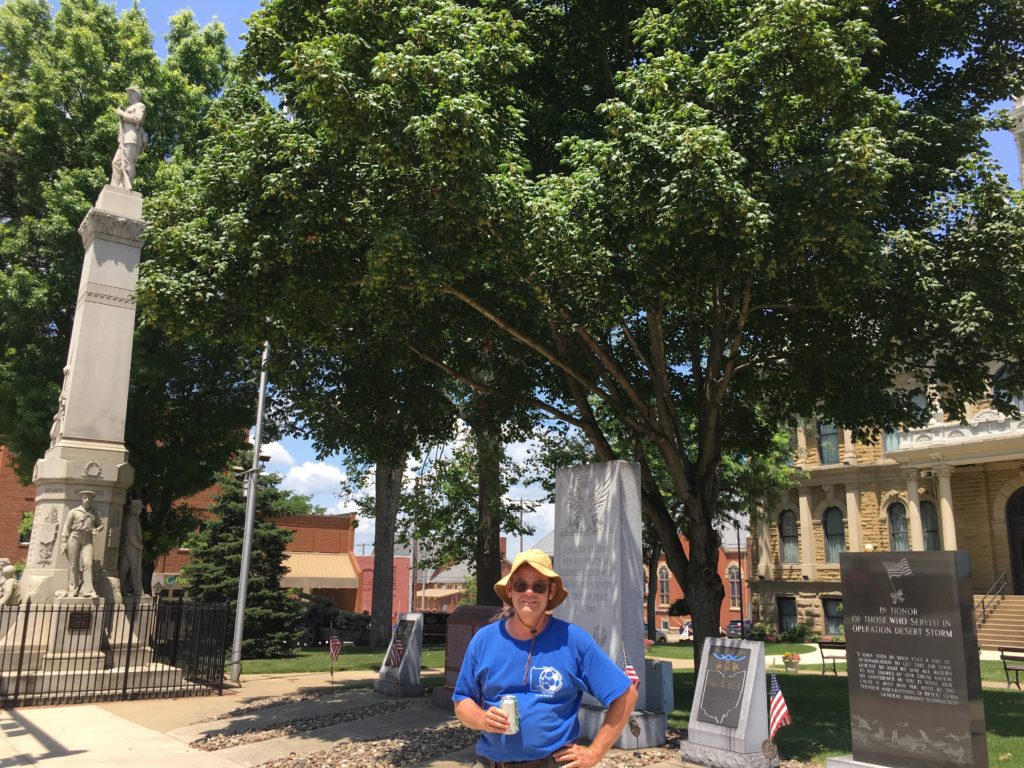
We started off mid-morning and visited Cambridge, OH, which has a very nice downtown. Cambridge has a thriving glass industry. We had hoped to visit The National Museum of Cambridge Glass, but like many museums in this area it is closed on Mondays and Tuesdays, as is the National Road and Zane Grey Museum. Instead, we are visiting downtowns and bicycle routes.
After lunch in Cambridge, we went to Zaneville, which has a very nice bicycle trail along the Muskingum River. It also has a huge park with lots of athletic facilities, including a fitness trail geared to the disabled. It seems to be quite a small town, but a good place to live if you like to be active.
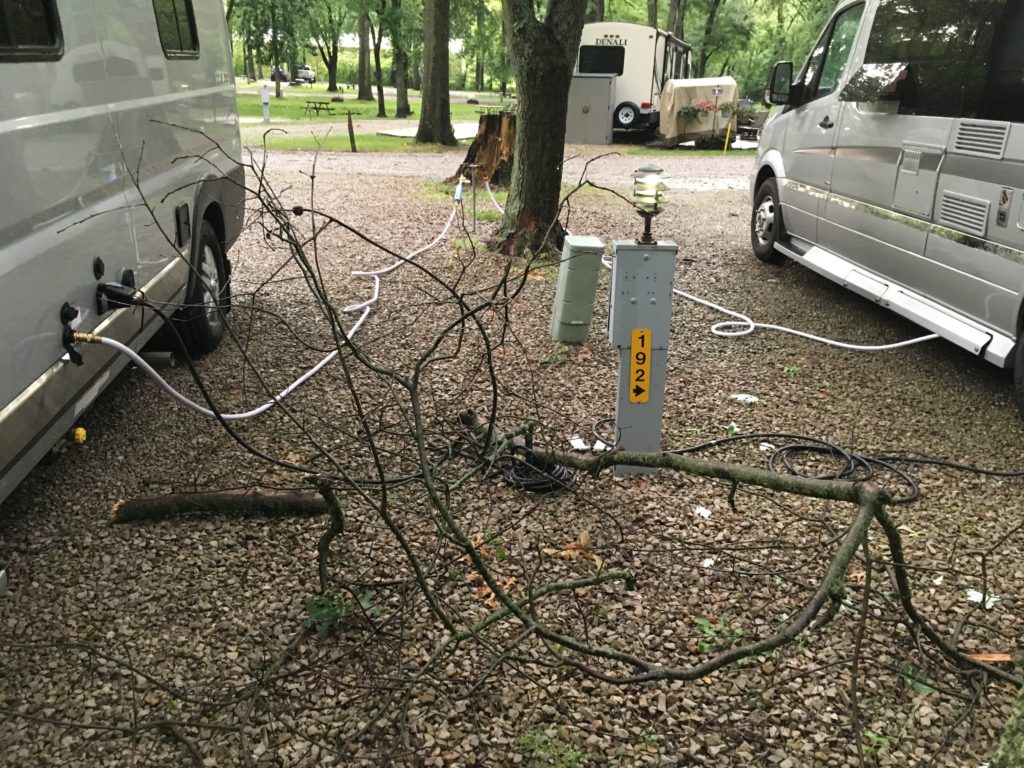
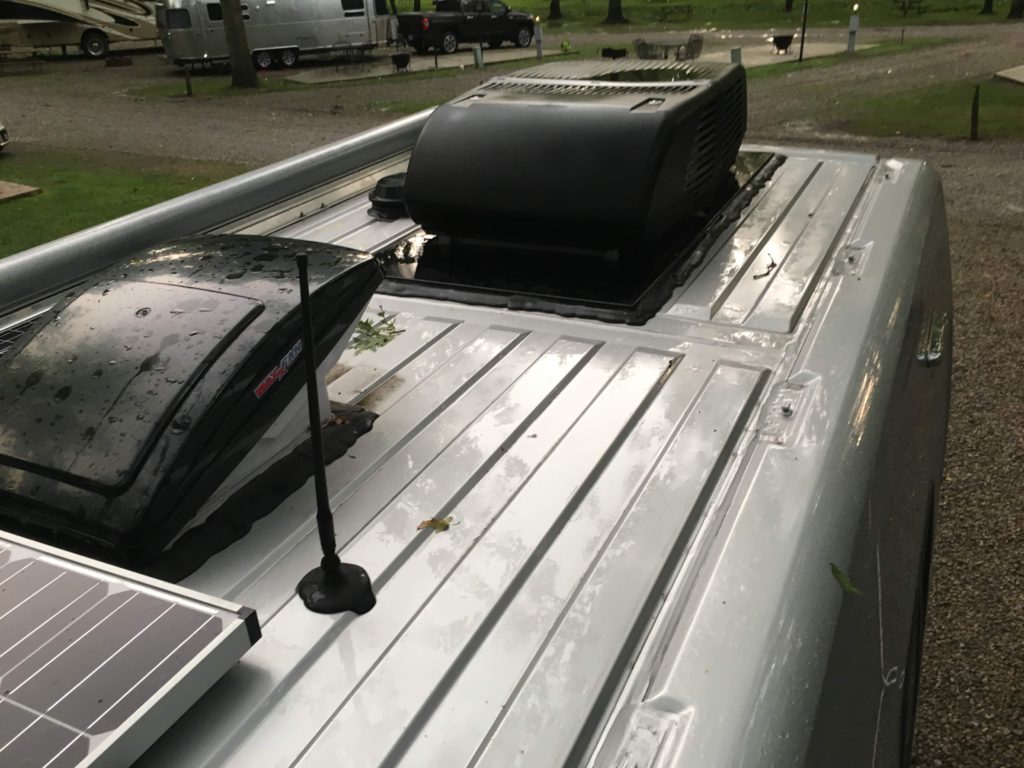
These activities brought us almost to 5:00. Chuck did not want to try driving through Columbus, OH during rush hour, so we stayed at a KOA east of the city. There was a short but intense downpour, during which a large branch crashed onto our roof. Fortunately, we brought a folding ladder so we could inspect the roof in case of incident. Also fortunately, the branch missed the antenna, fan, air conditioner and solar panels. In fact, despite the resounding crash it made when it hit, we did not even find a scratch.
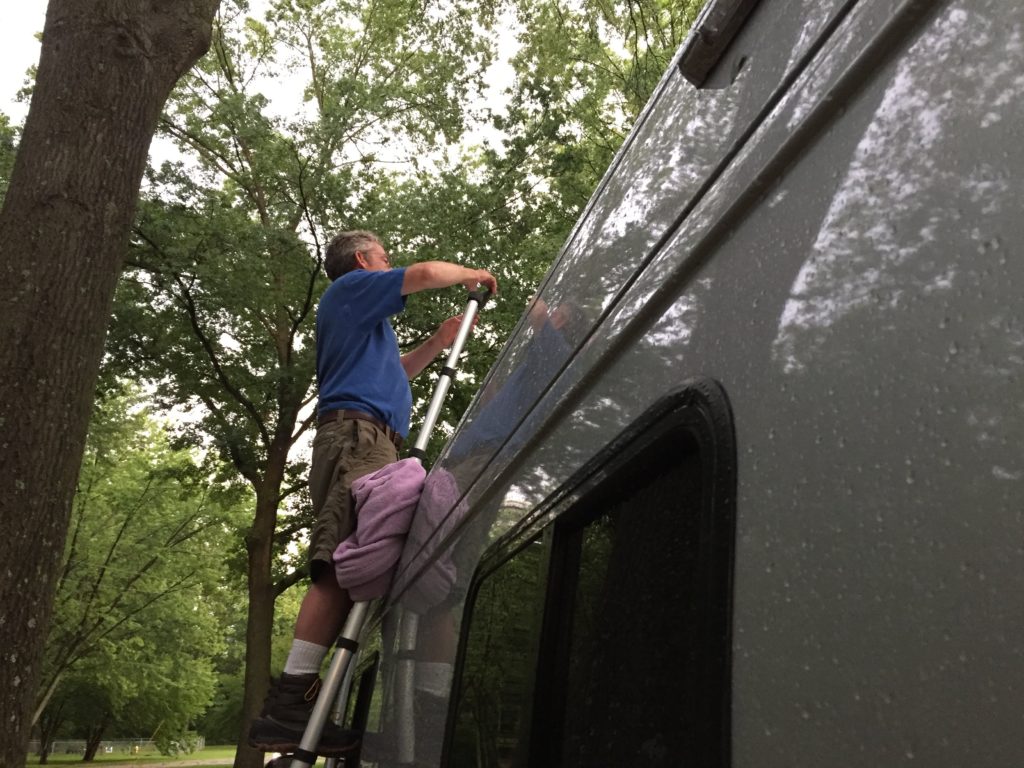
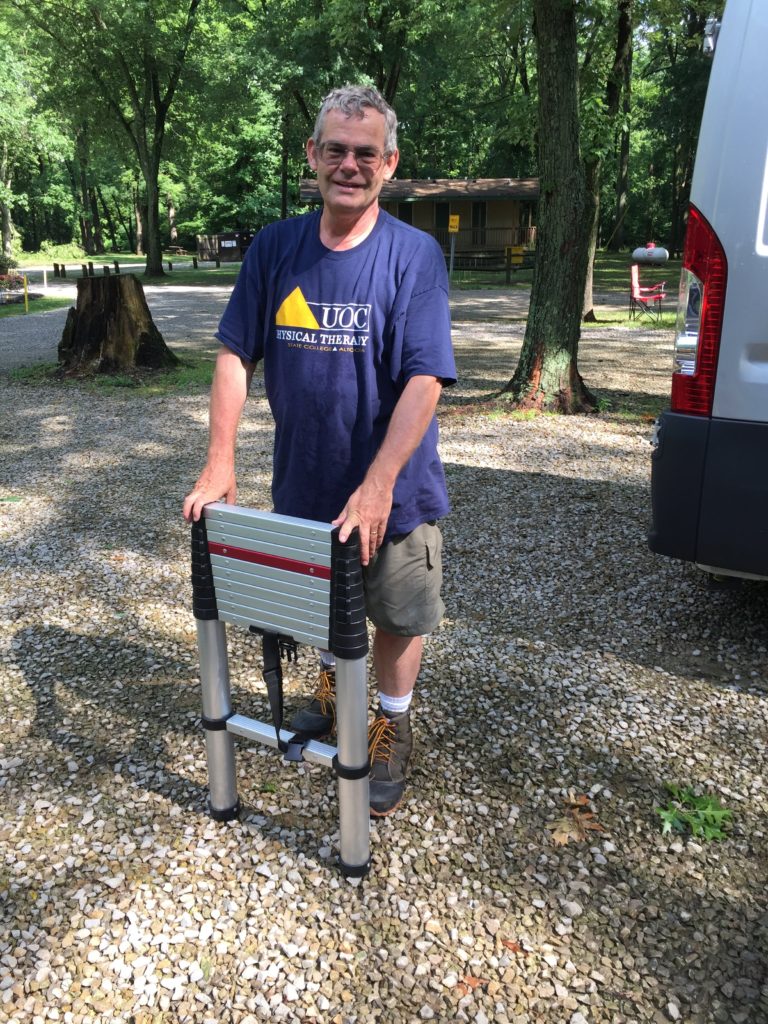
Tuesday’s travels brought us only about 30 minutes closer to St. Louis. So on Wednesday we scooted along I70 ending up to the west of Indianapolis. Thunderstorms and periods of intense rain are accompanying us. The area has been very wet. The fields are absolutely bare of crops.
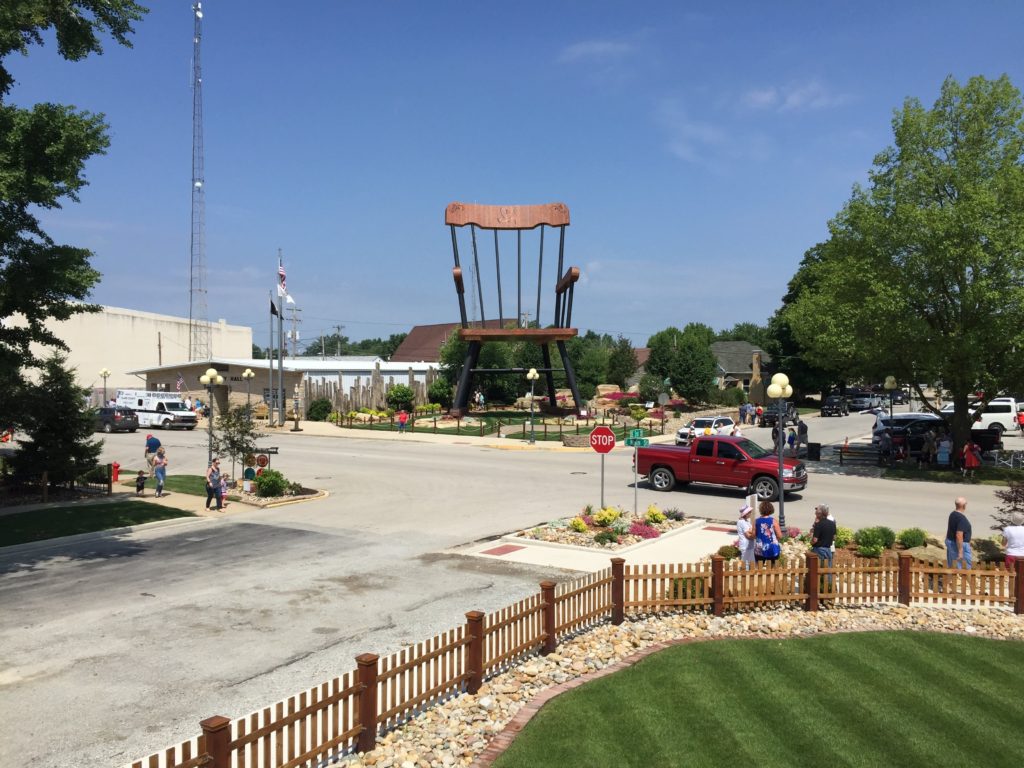
On Thursday we had a bit more time. We were intrigued by a highway advertisement for Casey, IL the town with “the world’s biggest”: golf tee, pitchfork, rocking chair, wind chimes, mailbox, teetertotter ….” We pulled off the highway and into downtown, just in time to catch the remnants of the town’s 4th of July parade. As everyone else streamed out of town, we walked into town.
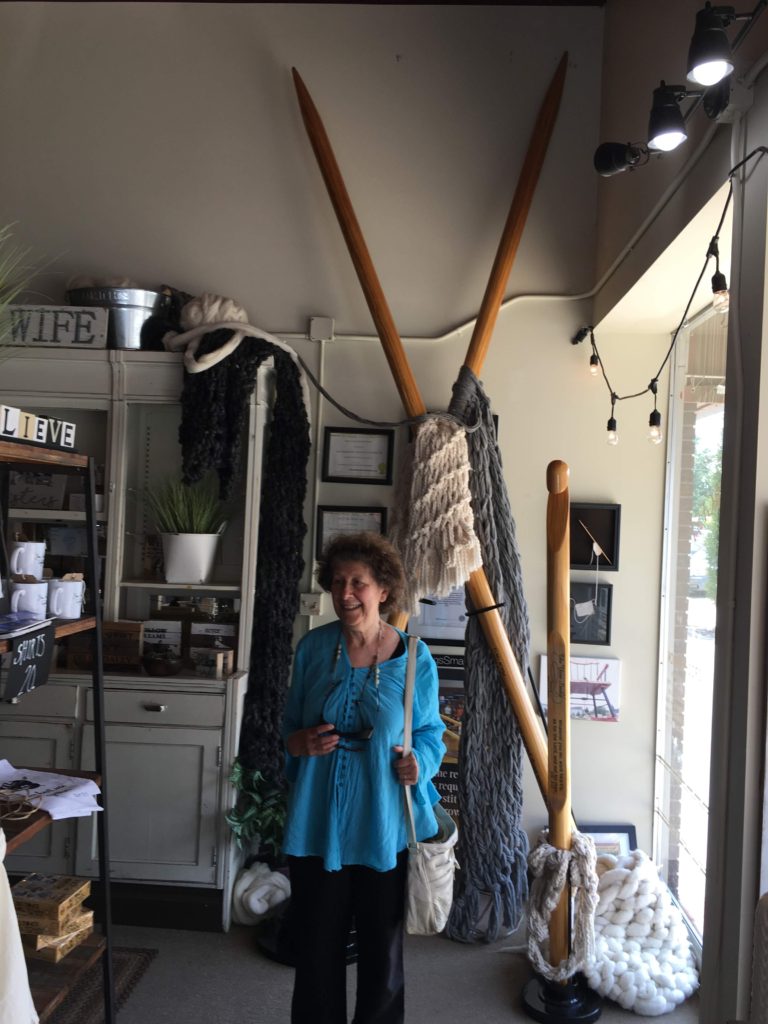
Pretty soon our attention as caught by what appeared to be the back of a large chair, looming over the top of a building. Making our way in that direction, we came across “the world’s largest rocking chair” a whopping 56.5 feet tall. (We posed with the chair, but this long shot gives a better idea of the size.) It is across the road from “the world’s largest wind chimes” and “the world’s largest teetertotter”. I should add that the chair no longer rocks, but the teetertotter will soon teeter and totter. We also saw “the world’s largest mailbox” (which is big enough to walk in), the “world’s largest knitting needles” (and the longest piece of knitting made with them) and the “world’s largest crochet hook”.
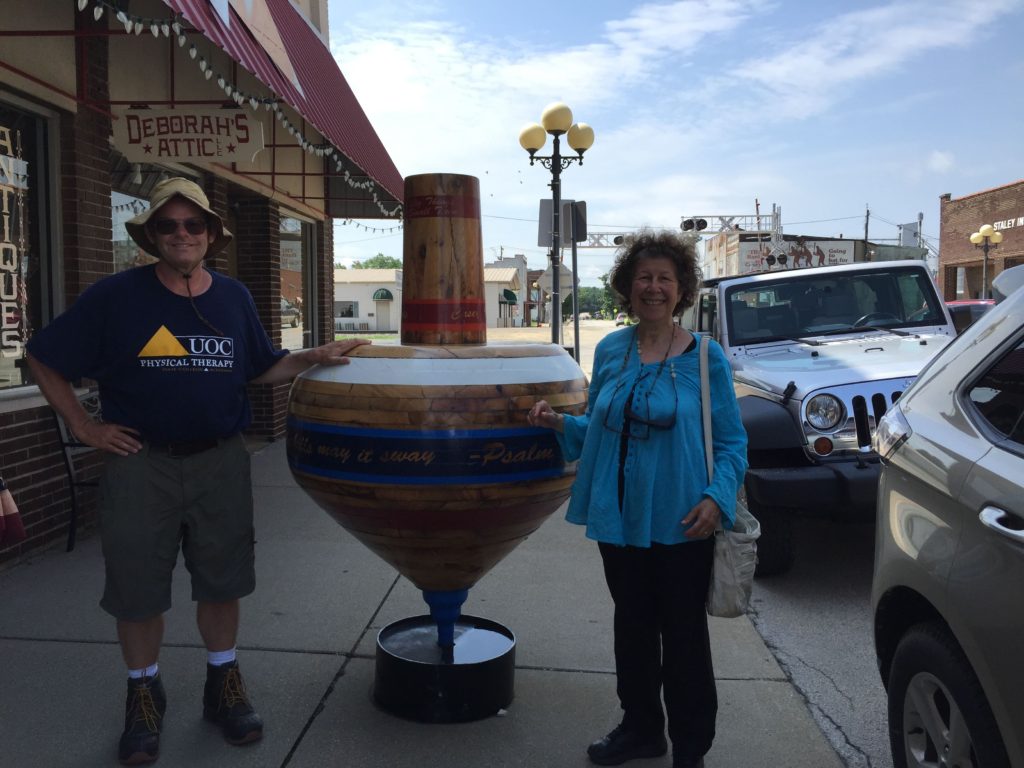
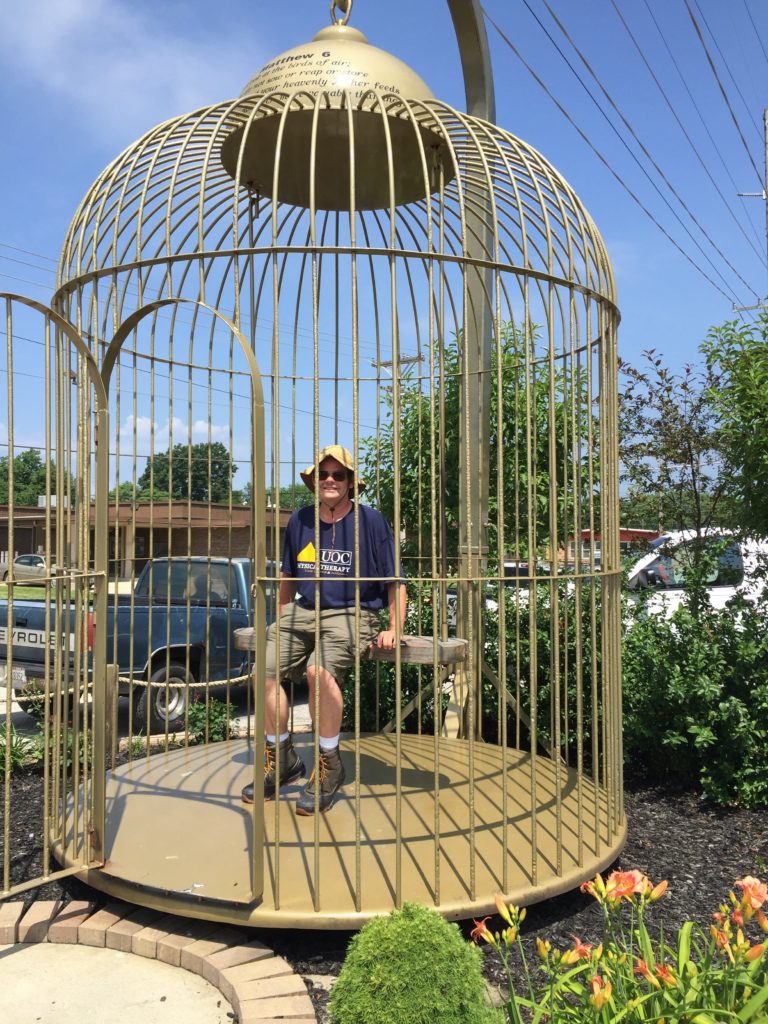
Some of the other “world’s largest” items were a distance away, and we decided not to travel out to see them. However, the downtown also featured an extremely big ruler, pencil, child’s top (above), and bird cage. We thought it was a very clever idea for attracting tourists to the town and enjoyed the whimsy of it.
We then continued on to our campsite in east St. Louis.
With several thunderstorms predicted, we debated whether we wanted to go into St. Louis for the 4th of July fireworks. We also wondered about parking in the city, especially with the van. In the end, we opted to have dinner at the campsite, and took a Uber to the Gateway Arch for the fireworks. I was quite worried about finding an Uber or other transportation to take us back – a correct concern as it happened (although we did make it home, of course).
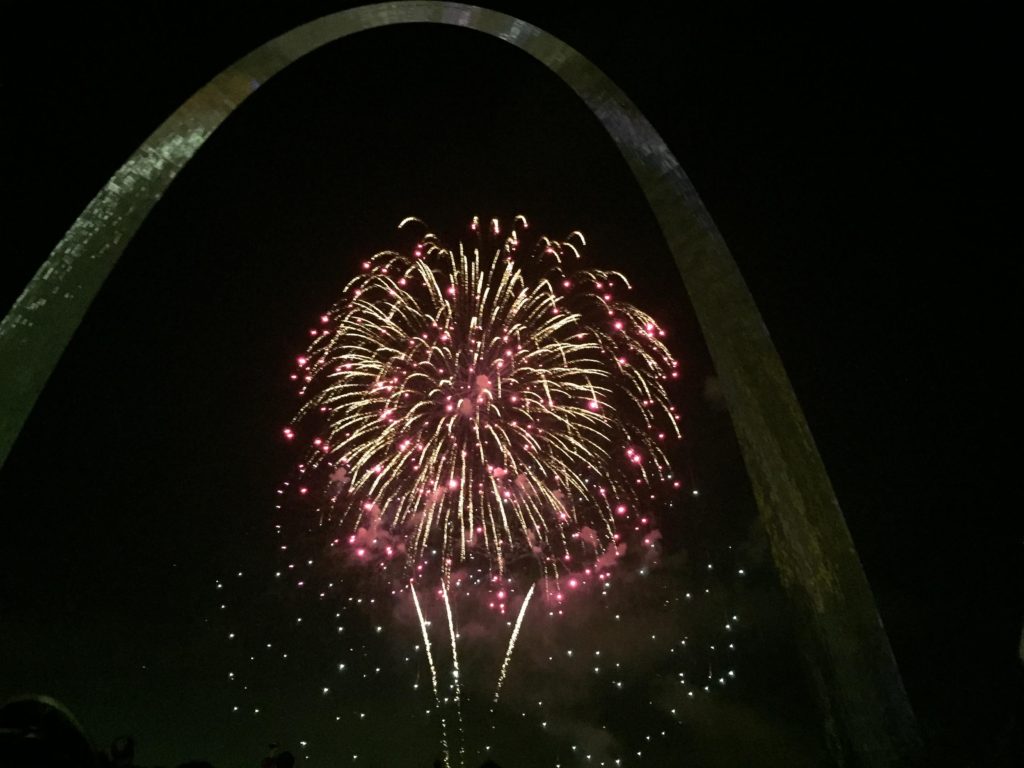
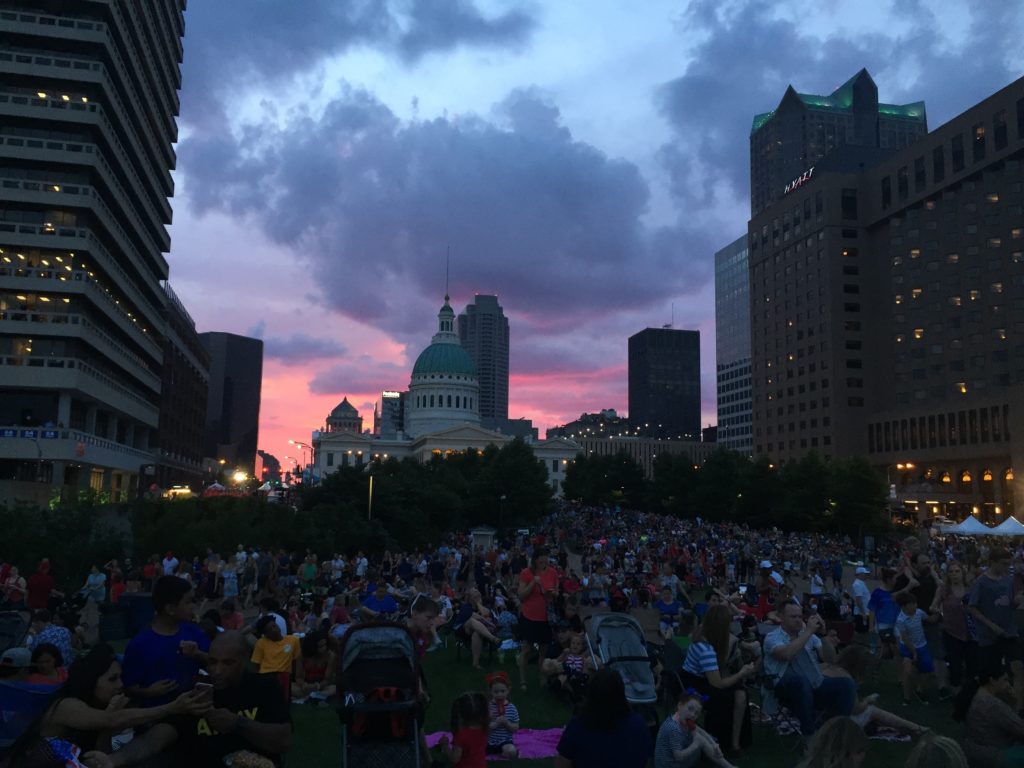
It was a very good fireworks display, made even more special by being framed by the Gateway Arch. It had one of the best finales I have seen in a fireworks show.
The 5th started out hot and humid, and got hotter and more humid, broken by very intense thunderstorms. Before the rain, we got a lot of practical things done around the RV – minor improvements, cleaning, etc. However, the rain put an end to this and we spent the remainder of the day reading.
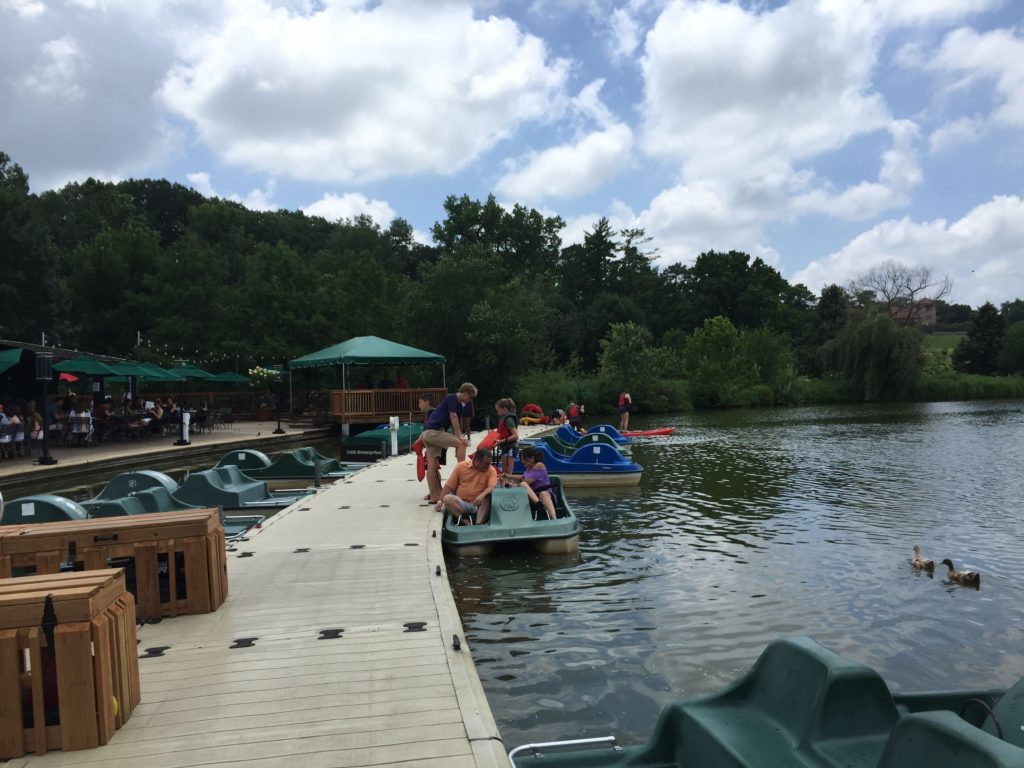
On the 6th we headed into St. Louis in the van. We parked in Forest Park, a large urban park similar to Central Park (NYC) or High Park (Toronto) with many trails, a lake, several museums, a zoo and a theatre. We started with lunch at the Boathouse, a nice restaurant on the edge of a spidery lake. Kayaks, paddle boards and pedal boats are all for rent, but the hot humid weather discouraged us from wanting to be out on the water with no shade.
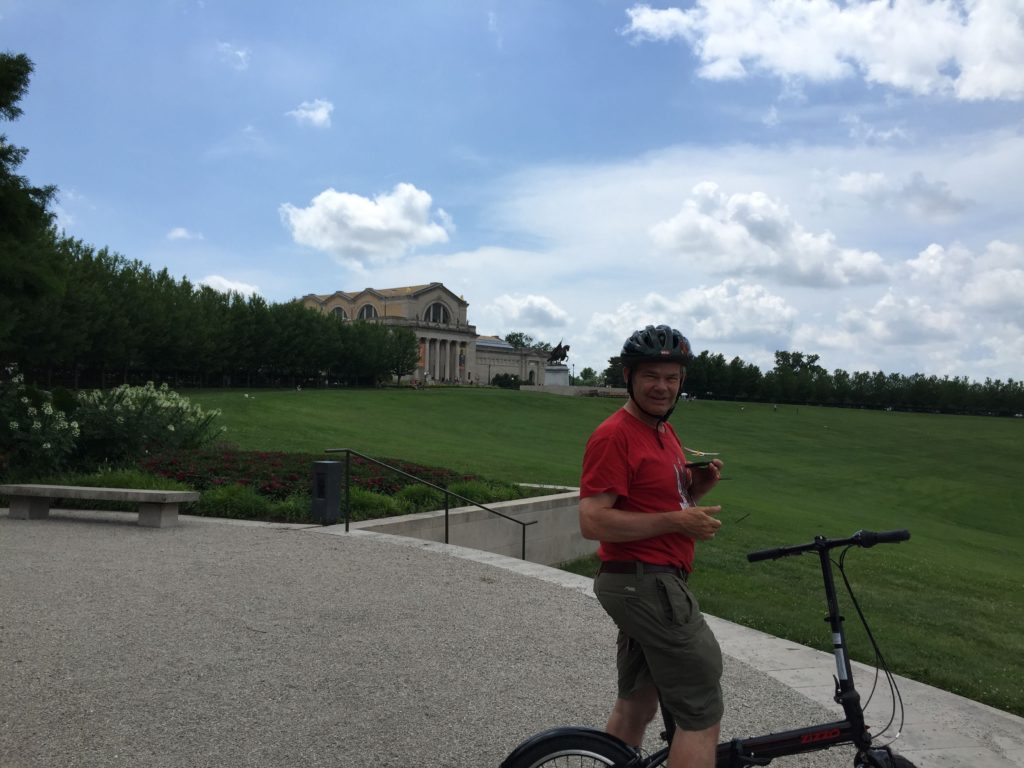
After lunch we bicycled around the park, taking a break at the Art Museum to see their Impressionist collection and cool off. After a pleasant afternoon biking, we headed back to the campground, stopping for more supplies en route.
We now have quite a collection of hooks and small shelves on most of the available spaces. including a shoe rack. This adds a bit of storage, but mostly it adds convenience as we do not need to dig through our tightly packed compartments as often.
The Vista was easy to keep clean, due to the small number of surfaces that could collect dirt and the necessity of cleaning before bringing in the slideout each time we moved. The Travato can be packed up without cleaning up. But it is so small that it is difficult to clean unless we can put things outside. There is absolutely no room to move things so we can clean under or around them. In fact, we have 2 laundry bins — one with laundry and the other with miscellaneous stuff we want to reach without opening cabinets — that sit on the bed during the day and in the cab at night. So even in daily use, we are constantly moving things around.
Chuck has been making “van buddies”. We met a couple with a slightly larger van. They are doing a lot of driving. We also met a man who has been living in a van with his dog for several years. So far we have not met anyone in a Travato.
